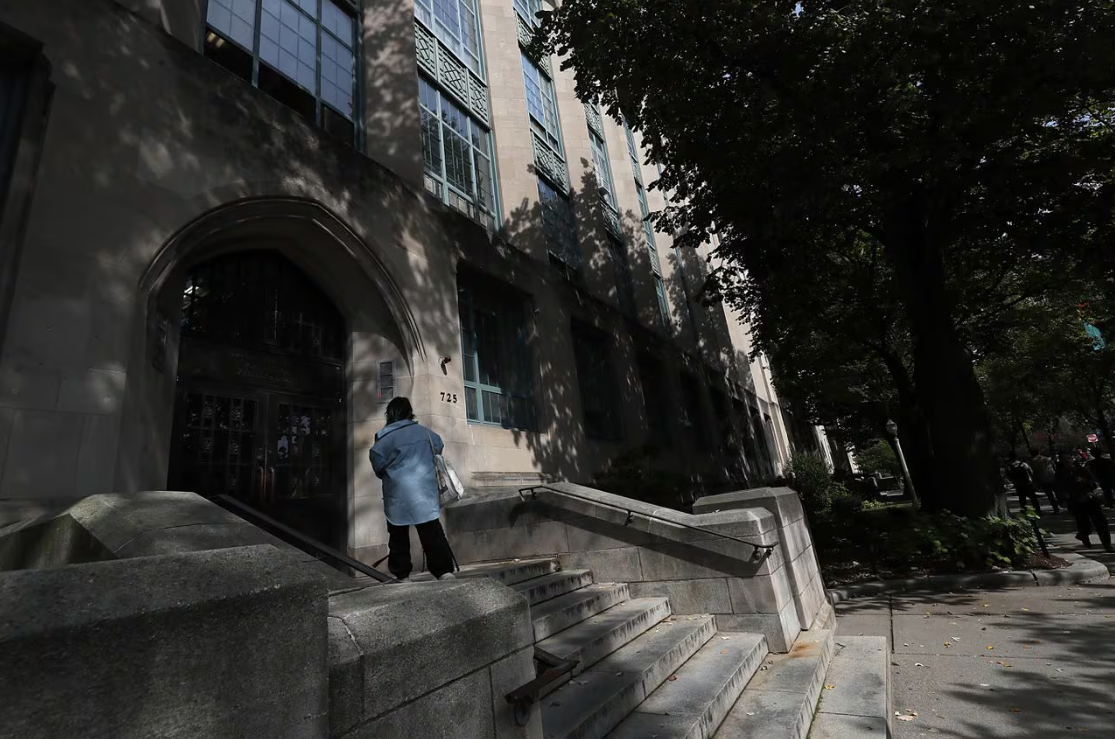今年秋天,这些新英格兰大学的年学费将突破 90,000 美元

【中美创新时报2024 年 3 月 27 日波士顿讯】(记者温友平编译)不少学生和家长在考虑大学费用时都会感到震惊。今年秋天,许多新英格兰大学的未来学生将看到一笔特别惊人的金额。《波士顿环球报》记者香农·拉尔森(Shannon Larson)对此作了如下报道。
据学校招生网站称,波士顿大学、塔夫茨大学、韦尔斯利大学和耶鲁大学每年的学费、住宿费和其他费用将超过 9 万美元。新英格兰地区的其他私立大学也可能突破 90,000 美元的年费门槛,但尚未公布最新的费用。
让我们在这里暂停一下。超过 90,000 美元。一年。为了大学。
它看起来像什么?那么,在 BU,2024-2025 学年的总费用包括 66,670 美元的学费、19,020 美元的住宿和食物费用,加上书本费和各种费用,总计 90,207 美元。与十年前(即 2014-2015 学年)相比,增长了近 42%,当时 BU 一年的总费用为 63,644 美元。
就在六年前,当塔夫茨大学、哈佛大学、波士顿大学和阿默斯特学院等私立大学的学费每年超过 7 万美元时,家长们惊出了一身冷汗。但自那以后,成本持续攀升。
“这些门槛总是会产生巨大的心理影响,”城市研究所教育数据和政策中心高级研究员、高等教育金融专家桑迪·鲍姆说。 “我记得当它超过 50,000 美元时,人们都感到震惊。”
震惊是对的。但如果说还有一线希望的话,那就是 90,000 多美元的数字没有考虑到助学金或贷款形式的经济援助或奖学金。
例如,根据波士顿大学网站,该校表示致力于“为美国公民或永久居民的一年级入学学生”提供 100% 的经济援助。
发言人科林·赖利 (Colin Riley) 在一封电子邮件中表示,2024-2025 学年,BU 将“向学生提供 4.25 亿美元的经济援助”,其中 92% 的学校经济援助是基于需求的。他说,这项援助“通过波士顿大学奖学金保证保证四年”。
赖利说,在 2022-2023 学年,波士顿大学约 56% 的国内学生接受了“某种形式的援助”,平均经济援助金额为 67,000 美元,平均费用为 16,000 美元。
“因为这是平均值,所以一些最贫困的学生支付了 0 美元,而其他学生则支付了更多,”他指出。
由于一系列问题,这个大学招生季对许多家庭来说陷入了混乱——其中最主要的是用于确定联邦经济援助的新表格(即联邦学生援助免费申请表(FAFSA))的推出遇到了困难。
严重的延误意味着大学直到三月份才收到申请者的 FAFSA 信息,这让一些高中生在权衡选择时陷入了困境。
鲍姆称这些问题是“短期困难”,并表示家庭应该坚持下去。
“这真的很不幸,我确信有些人已经放弃了,”她说。 “整个事情是为了增加人们获得的财政援助的数量。财政援助制度现在将为人们提供更多的钱。这只是解决这个问题的问题。”
波士顿地区的一些学校尚未公布下一学年的费用。尽管如此,这些机构的价格仍可能上涨。
在 2023-2024 学年,哈佛大学收取的账单费用为 79,540 美元,如果考虑到书本等费用,这一数字预计升至 87,450 美元。波士顿学院去年的总费用为 89,955 美元。与此同时,东北大学的总标价为 86,821 美元。
新英格兰及其他地区的少数学校公布了 2024-2025 学年的总费用。
根据学校网站上发布的初步估计,明年梅德福塔夫茨大学的就学费用将为 91,888 美元(不包括健康保险)。在康涅狄格州纽黑文市的耶鲁大学,预计费用为 90,975 美元;伊斯顿 Stonehill 学院 81,729 美元; 波士顿萨福克大学 73,002 美元;阿默斯特的阿默斯特学院 88,210 美元; 沃尔瑟姆布兰代斯大学 89,824 美元;麻省理工学院 85,960 美元。同样,这些总数都没有反映财政援助。
如果有相对便宜的东西,可以在公立大学找到。明年秋天,在马萨诸塞大学阿默斯特分校,住在校园内的州内学生的标价为 37,219 美元。
题图:波士顿大学是新英格兰地区众多每年学费超过 90,000 美元的学校之一。SUZANNE KREITER/GLOBE STAFF
附原英文报道:
These New England universities will top $90,000 a year this fall. Expect more to follow.
By Shannon Larson Globe Staff,Updated March 27, 2024
More than a few students — and parents — experience sticker shock when considering the cost of college. And prospective students at a number of New England universities are seeing a particularly breathtaking sum this fall.
Boston University, Tufts, Wellesley, and Yale will now top $90,000 a year for tuition, housing, and other expenses, according to the schools’ admissions websites. Other private colleges around New England are also likely to cross the $90,000 annual threshold, but haven’t released their updated costs.
Let’s pause for a moment here. More than $90,000. A year. For college.
What does look like? Well, at BU, the total cost for the 2024-2025 academic year includes $66,670 in tuition, $19,020 for housing and food, plus the cost of books and various fees for a grand total of $90,207. That’s a nearly 42 percent jump from a decade ago, the 2014-2015 academic year, when the all-in cost for a year at BU was $63,644.
Just six years ago, parents broke out in a cold sweat when costs at private universities like Tufts, Harvard, BU, and Amherst College surpassed $70,000 a year. But since then, costs have continued to climb.
“There’s always a huge psychological impact to these thresholds,” said Sandy Baum, senior fellow in the Center on Education Data and Policy at the Urban Institute and an expert on higher education finance. “I remember when it went above $50,000, and people were just in shock.”
Shock is right. But if there’s a silver lining, it’s that the $90,000-plus figures do not take into account financial aid — in the form of grants or loans — or scholarships.
BU, for instance, says it is committed to meeting 100 percent of demonstrated financial aid “for admitted, first-year students who are US citizens or permanent residents,” according to its website.
For the 2024-2025 academic year, BU will award “$425 million in financial assistance to students,” with 92 percent of the school’s financial assistance being need-based, said spokesman Colin Riley in an e-mail. That aid is “guaranteed for four years with BU Scholarship Assurance,” he said.
During the 2022-2023 academic year, approximately 56 percent of domestic students at BU received “some form of aid,” with the average financial aid package being $67,000, for an average cost of $16,000, Riley said.
“Because this is an average, some of the neediest students paid $0, and others paid more,” he pointed out.
This college admissions season has descended into chaos for many families because of a number of problems — chief among them the rocky rollout of the new form used to determine federal financial aid, known as the Free Application for Federal Student Aid (or FAFSA).
Significant delays meant colleges did not receive FAFSA information from applicants until March, leaving some high school seniors in limbo as they weigh their options.
Baum called the issues a “short-term difficulty” and said families should hold tight.
“It’s really unfortunate, and I’m sure some people have given up,” she said. “The whole thing is about increasing the amount of financial aid that people are going to get. The financial aid system is going to give people more money now. It’s just a matter of making this work out.”
Some schools in the Boston area have yet to announce their costs for the upcoming school year. Still, those institutions are likely to see their prices rise.
For the 2023-2024 academic year, Harvard charged $79,540 for billed costs, a number that rose to an estimated $87,450 when expenses such as books were factored in. At Boston College, the all-in cost last year was $89,955. Meanwhile, at Northeastern University, the total sticker price was $86,821.
A handful of schools in New England and beyond have published their total costs for the 2024-2025 academic year.
At Tufts in Medford next year, the cost of attendance will be $91,888 (not including health insurance), according to preliminary estimates posted on the school’s site. At Yale University in New Haven, Conn., the estimated cost will be $90,975; $81,729 at Stonehill College in Easton; $73,002 at Suffolk University in Boston; $88,210 at Amherst College in Amherst; $89,824 at Brandeis University in Waltham; and $85,960 at the Massachusetts Institute of Technology. Again, none of these totals reflect financial aid.
If there are relative bargains to be had, they can be found at public universities. Next fall at the University of Massachusetts Amherst, the sticker price for an in-state student living on campus is $37,219.

